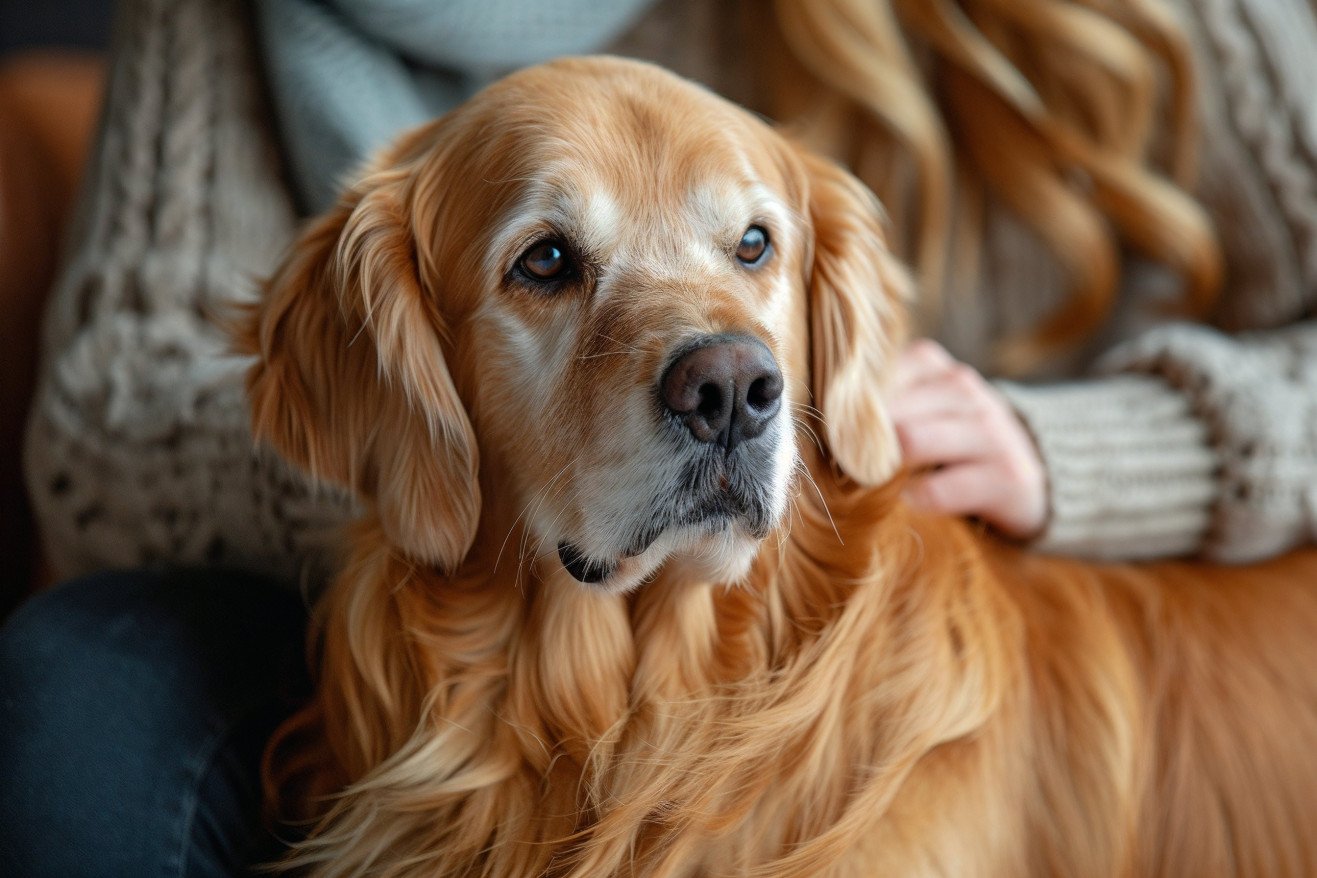Why Are My Dog’s Back Legs Shaking? Causes and Expert Insights
5 February 2024

If you’ve ever noticed your dog’s back legs shaking, you’ve probably wondered why it happens. There are many reasons why your dog’s back legs might be shaking, including old age, muscle fatigue, cold, stress, or more serious issues like arthritis, hip dysplasia, or neurological problems. If the shaking is ongoing or if it’s accompanied by other symptoms, it’s important to see a vet to get a proper diagnosis.
In this article, we’ll explore interdisciplinary research that explains the reasons behind dogs’ back legs shaking. We’ll look at veterinary research, animal behaviorist perspectives, musculoskeletal studies, and nutritional science to learn about the impact of diet on a dog’s physical health. By combining these different areas of research, you’ll gain a comprehensive understanding of the potential causes and the most effective ways to deal with this worrisome issue.
What are the most common causes of shaking in a dog's back legs?
Why Do Dogs Shake? What It Means When Your Dog Shakes Their Leg
There are many reasons that a dog might shake their leg, ranging from completely normal to potentially serious health issues. From everyday causes like muscle fatigue, being cold, or just being excited, there are plenty of reasons that a dog might shake their leg.
Like humans, dogs might shake to warm up or when they are excited to see someone, according to BetterPet. However, leg shaking in dogs can also be a sign of aging and conditions like arthritis, which can cause involuntary shaking due to the weakening of the joints.
In addition, a dog’s mental state can have a big impact on their behavior. It’s been found that anxiety and fear can cause physical symptoms like shaking and can also cause other behaviors like pacing and lip licking. It’s important to pay attention to other symptoms like limping or restlessness, as these can be signs of pain or poisoning.
If the shaking continues or is accompanied by other symptoms, it’s important to see a vet. It’s stressed that it’s important to get to a vet quickly for a diagnosis and treatment. Knowing the causes of shaking is important for your dog’s health, as some causes can be progressive and affect your dog’s mobility. This can help you get ahead of the issue and may also help you explore specific musculoskeletal causes of shaking.
Understanding the Wobble: Musculoskeletal Problems
The complex musculoskeletal system of a dog’s rear legs is critical to their strength and ability to move. According to Physiopedia, the hindlimb assembly consists of the pelvic girdle and the bones of the hindlimb: the femur, tibia, fibula, tarsal, and digital bones. These bones work together with the muscles and joints to bear the dog’s weight and enable movement.
Two musculoskeletal issues that can lead to weakness or wobbliness in a dog’s back legs are arthritis and hip dysplasia. In addition to the wobble, other signs of these issues include difficulty getting up, not wanting to go up stairs, and a decrease in activity. Musculoskeletal problems are typically diagnosed through a physical exam and imaging tests like X-rays and MRI scans that can provide detailed views of the bones and joints.
Treatments for musculoskeletal issues can include anti-inflammatory drugs to help with pain and physical therapy to help strengthen the muscles and improve joint function. It’s important to note, however, that while these treatments can help, every dog is different and will need an individualized treatment plan.
Understanding Canine Leg Tremors: Neurological Causes
If your dog has shaking back legs, it could be a sign of an underlying neurological condition like degenerative myelopathy, a disease that causes progressive weakness in a dog’s back legs.
Neurological conditions are those that impact the brain, spinal cord, and the complex system of nerves that control movement and sensation. Unlike musculoskeletal conditions, neurological conditions often come with other symptoms like seizures or sudden changes in behavior, which are signs of central nervous system involvement.
The central nervous system (CNS), which includes the brain and spinal cord, and the peripheral nervous system (PNS), which connects the CNS to the limbs and organs, are both important for a dog’s leg function and overall mobility. BrightCare Animal Neurology explains that the CNS is responsible for basic functions and responses, while the PNS takes care of stimuli and relaxation processes.
Neurological conditions are diagnosed with a full neurological exam, and if necessary, blood work, imaging, or spinal fluid taps to get to the bottom of the issue. PetMD notes that treatment can range from medication and lifestyle changes to surgery in more serious cases. The goal of treatment is to manage symptoms and maintain quality of life, which is especially important for dogs living with these conditions.
Feeding Strength: The Role of Diet in Canine Musculoskeletal Health
Feeding your dog a balanced diet is important for maintaining your dog’s musculoskeletal health. There are certain nutrients that are especially important for joint health and the health of the limbs in general.
A study published in the Journal of Animal Science even suggested that natural diets that are made up of whole foods may have synergistic health effects that are not present in processed diets.
Fatty acids, especially omega-3s like EPA and DHA, are especially important for joint health, according to VCA Animal Hospitals. These fatty acids can help reduce inflammation, which can make conditions like arthritis, which can lead to shaking in the legs, worse.
Glucosamine is another important nutrient that can help support joint health. According to VCA Animal Hospitals, there are diets and supplements, like Hill’s Prescription Diet J/D, that are fortified with ingredients that support joint health. On the other hand, a study published in PubMed showed that dietary deficiencies, especially in protein, can lead to muscle wasting, which can cause weakness and shaking in the hind legs.
If you want to make sure that your dog’s body is as healthy as possible, you may want to make sure that you’re feeding it a diet that includes these important nutrients.
However, it’s important to work with your vet to make sure that you’re adjusting your dog’s diet in a way that’s tailored to your dog’s individual health needs, so that you can make sure that you’re feeding it in a way that will best support its musculoskeletal health.
Walking the Dog: The Importance of Exercise for Hind Leg Health
In addition to helping your dog burn off some of their seemingly endless energy, regular exercise can help ensure that your dog’s back legs stay strong and healthy. A study in Animals Basel showed that dogs who participated in a structured exercise program had increased bone mineral density and muscle volume, both of which can help prevent the conditions that lead to shaking in the legs.
Regular exercise can help ensure that your dog’s musculoskeletal system stays strong, which is important for preventing the involuntary shaking that can be caused by a number of different health problems.
That said, it’s important to make sure that the exercise you’re providing is appropriate for your dog’s health. For example, dogs with pre-existing health conditions will benefit from low-impact exercises like swimming and walking that won’t put too much stress on their bodies.
In fact, too much exercise, especially for dogs that are predisposed to musculoskeletal issues, can make shaking worse or even lead to injury. Make sure to take your dog’s breed, age, and health into account when determining how much exercise is right for them.
Make sure that you’re providing a well-rounded exercise program by slowly increasing the intensity and monitoring how your dog responds to the increased activity. Work with your vet to develop an exercise program that will help keep your dog’s back legs healthy and reduce the risk of shaking so that you can ensure that your furry friend stays happy and healthy well into their senior years.
Putting It All Together
As the research has shown, there are many different reasons why dogs experience shaking in their back legs, some of which are completely normal and others that are more serious. From the normal shaking that comes with excitement to the shaking that is a result of a neurological disorder, it’s important to know why your dog is experiencing this symptom.
Musculoskeletal disorders, psychological stress, diet, and exercise all have a part to play in the health and stability of your dog’s back legs.
Veterinarians are the best people to help you figure out what’s going on, and we can’t stress enough the importance of taking your dog to the vet if their shaking is persistent or if it’s accompanied by other symptoms. It’s important for dog owners to be aware of their dog’s health and to know when to take them to the vet if something seems off.
In the end, it’s important to remember that your dog is counting on you to take care of them. This means making sure that they have a healthy diet, get enough exercise, and see the vet for regular checkups. By making sure that your dog gets the care they need, you can make sure that they are happy and healthy and that they are able to walk with confidence and without shaking.


